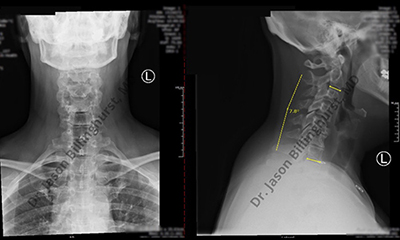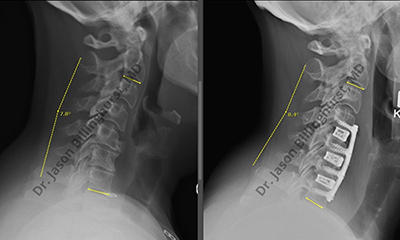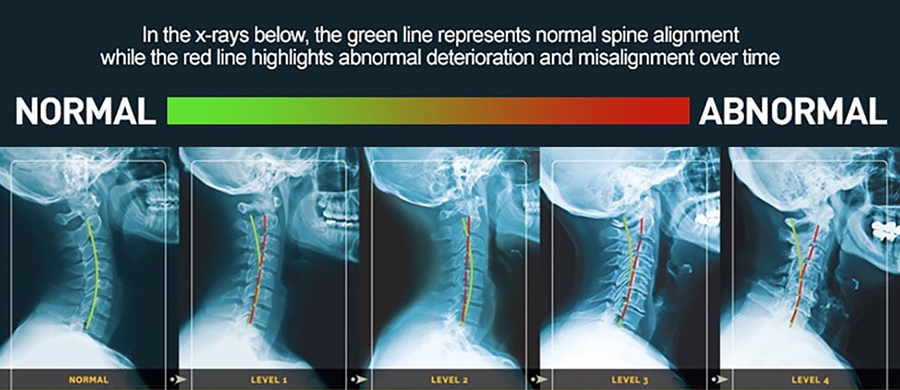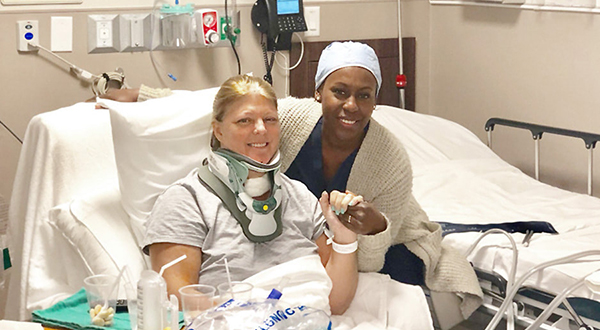

Cervical kyphosis is a common type of spinal deformity which is characterized by an abnormal forward curvature of the cervical spine. The figure below demonstrates the spectrum of cervical alignments that patients often present with.

On the left is a normal cervical alignment (green line) in which the cervical spine is curved “back”, which allows us to maintain a normal horizontal gaze (keep our heads up in a normal position), without much pain or effort. This proper alignment is referred to as cervical lordosis. Normal cervical lordosis is about 20 degrees. Contrast this with the image on the right in which the spine is now curved forward (red line). This condition, cervical kyphosis, often results in chronic neck and/or arm pain. It makes it difficult for us to maintain a normal horizontal gaze, free of neck pain and muscle fatigue.
Cervical kyphosis is often seen acutely following soft tissue (whiplash) injuries to the cervical spine. It may also develop slowly over time as a result of cervical disc degeneration. Cervical disc degeneration is a normal part of the aging process. However, the abnormal forward curvature that may result from it is not normal, and cervical kyphosis may lead to chronic neck and/or arm pain as discussed above, and importantly, may also lead to an increased rate of disc degeneration in the cervical spine.
When patients present to my office with neck and/or arm pain and their x-rays demonstrate cervical kyphosis, they can often be successfully treated with non-operative care that may include physical therapy, chiropractic care, medications, and possibly injections. On the other hand, surgery may be indicated if the symptoms are not relieved with these modalities or if there are any significant neurologic deficits present on physical examination.
I was recently fortunate enough to have had the opportunity to treat a very pleasant 52-year-old woman with this condition. She complained of chronic neck and arm pain. Her x-rays demonstrated multiple levels of cervical disc degeneration and 8 degrees of cervical kyphosis (forward curvature). Remember, normal alignment is about 20 degrees of lordosis, so she is about 30 degrees off from what would be considered normal alignment.

Her MRI also demonstrated multiple levels of nerve root impingement. Having failed to improve with the normal course of non-operative care, she was offered surgery decompress the spinal cord and nerve roots and to correct her spinal deformity.
She underwent a 3-level anterior cervical discectomy and fusion (ACDF) in our outpatient surgery center. At the Orthopedic Surgery Center of Palm Beach County, we have to ability to monitor our patients overnight and for up to 23 hours postoperatively if necessary. This patient spent the night at our facility with a highly trained nurse at her side to monitor her for any potential complications. She was discharged home in stable condition the following morning. Her post-operative x-rays demonstrated correction of her deformity following the C4-C7 ACDF procedure.







